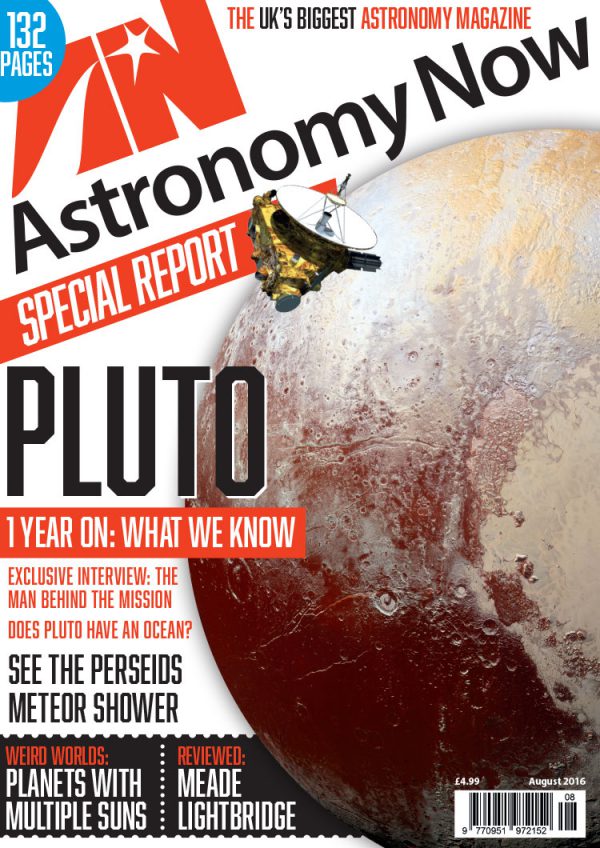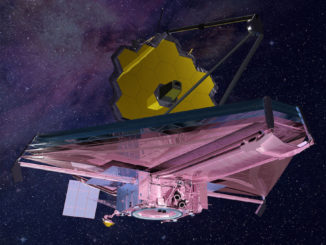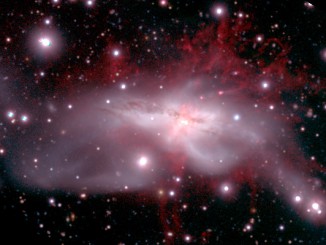
Perseid meteors originate from debris left in the wake of comet 109P/Swift-Tuttle — rocky particles strewn along its 133-year-long orbit. In the period from 23 July to 20 August, the Earth punches through this widely-dispersed cloud, causing grit to enter our planet’s atmosphere at speeds up to 36 miles per second (58 kilometres per second). At this velocity of almost 130,000 mph, friction with the air causes the debris to vaporise, creating the streak of light we call a meteor.
Amazingly, most meteors are caused by particles the size of a grain of sand; a spectacular fireball might be caused by something the size of a pea. While you might see lucky enough to see such an event on any moonless night over the month-long duration of the Perseid shower, the intensity and frequency of meteors reach a relatively short-lived peak around 12 August. At this time one could, under dark and favourable conditions, see a shooting star every minute.
Calculations by Esko Lyytinen and Mikhail Maslov predict that we will cross a part of the Swift-Tuttle stream which was shifted closer to the Earth’s orbit by Jupiter in 2016. They believe that up to 150 meteors per hour could be seen under ideal conditions, the mean or ‘traditional’ maximum occurring about 12h UT on 12 August. Unfortunately, this is in daylight for Western Europe. However, if dynamicist Jérémie Vauballion is correct, we could see a surge of activity on 12 August between 1am BST and the onset of nautical twilight around 4am BST in the British Isles.
Predicting meteor shower maxima is a difficult science. The swarms of tiny meteoroid particles orbiting the Sun are easily deflected by the gravitational tugs of planets, so predicting when the Earth is most likely to intersect the densest clouds of this cometary debris is a tricky process. If the 12h UT maximum on 12 August holds true then the shower will favour North American observers, but an ‘early’ peak 0h-4h UT on 12 August would be perfect for the UK. Observers in Western Europe would be advised to also concentrate on the night of 12-13 August (though moonlight will interfere before 1am BST Saturday in the UK) if the traditional maximum is late.

On the night of 11-12 August, darkness returns soon after midnight for the UK since the 8-day-old waxing gibbous Moon sets about 12:20am BST Friday as seen from the centre of the British Isles (don’t forget to consult our interactive Almanac to obtain precise moonset times where you live). Soon after midnight, the Perseid radiant lies about 40 degrees (twice the span of an outstretched hand at arm’s length) above the northeast horizon in the UK.
How to see the most meteors
The faintest meteors are the most plentiful, so to maximise your chances you should find a safe location that is as far removed from streetlights and other sources of light pollution as you can and allow your eyes to become fully dark adapted. A thermos flask of your favourite hot beverage and a reclining chair or even a camping air mattress is a good idea as you’ll be still for long periods during your watch. Don’t forget to bring an extra jacket or a blanket as temperatures can dip after midnight when shooting stars are most plentiful.
The beauty of meteor watching is that you don’t need specialist equipment; your unaided eyes (with spectacles for distant viewing, if you need them) are perfect. Observing in company is always fun and you can make it something of a “Perseid Party.” While it may be tempting to concentrate on the radiant in the northeast, let your eyes wander around the sky. Even if you miss the occasional bright shooting star, there is a beautiful swathe of Milky Way passing overhead as seen from rural sites once the Moon sets. Clear skies!
Inside the magazine
For a comprehensive guide to observing and photographing the 2016 Perseid meteor shower in addition to all that is currently happening in the sky, obtain a copy of the August 2016 edition of Astronomy Now.
Never miss an issue by subscribing to the UK’s biggest astronomy magazine. Also available for iPad/iPhone and Android devices.




